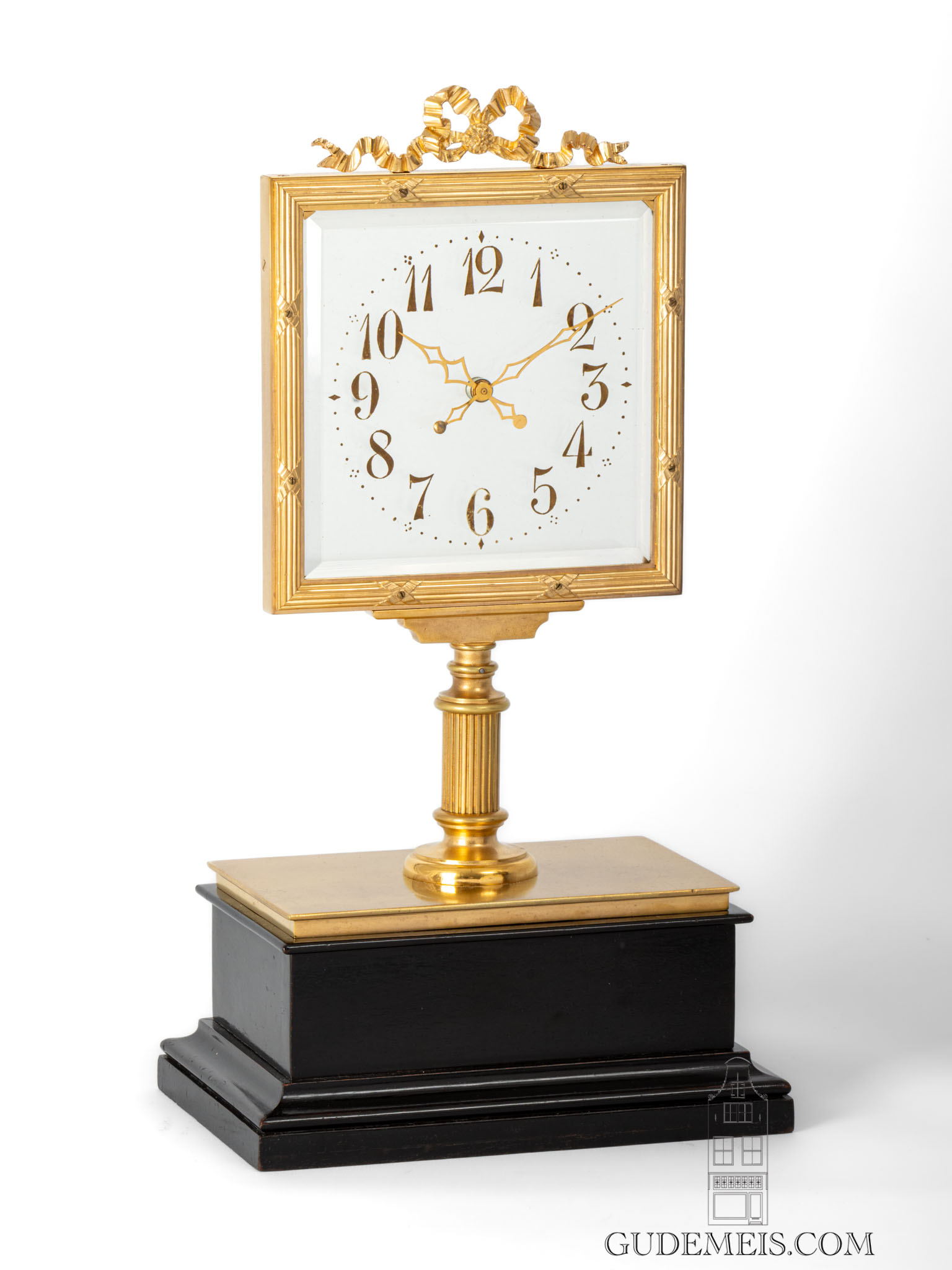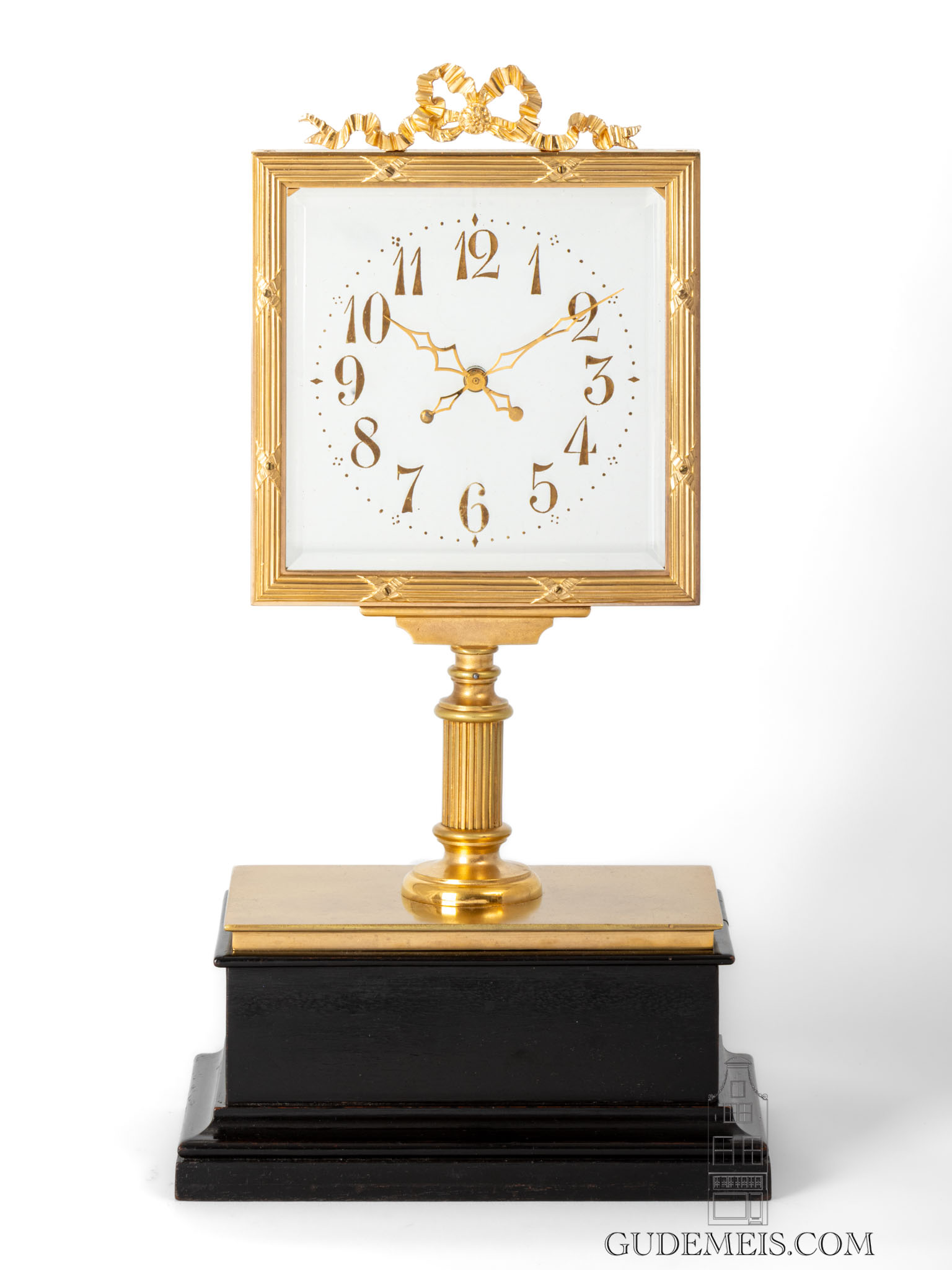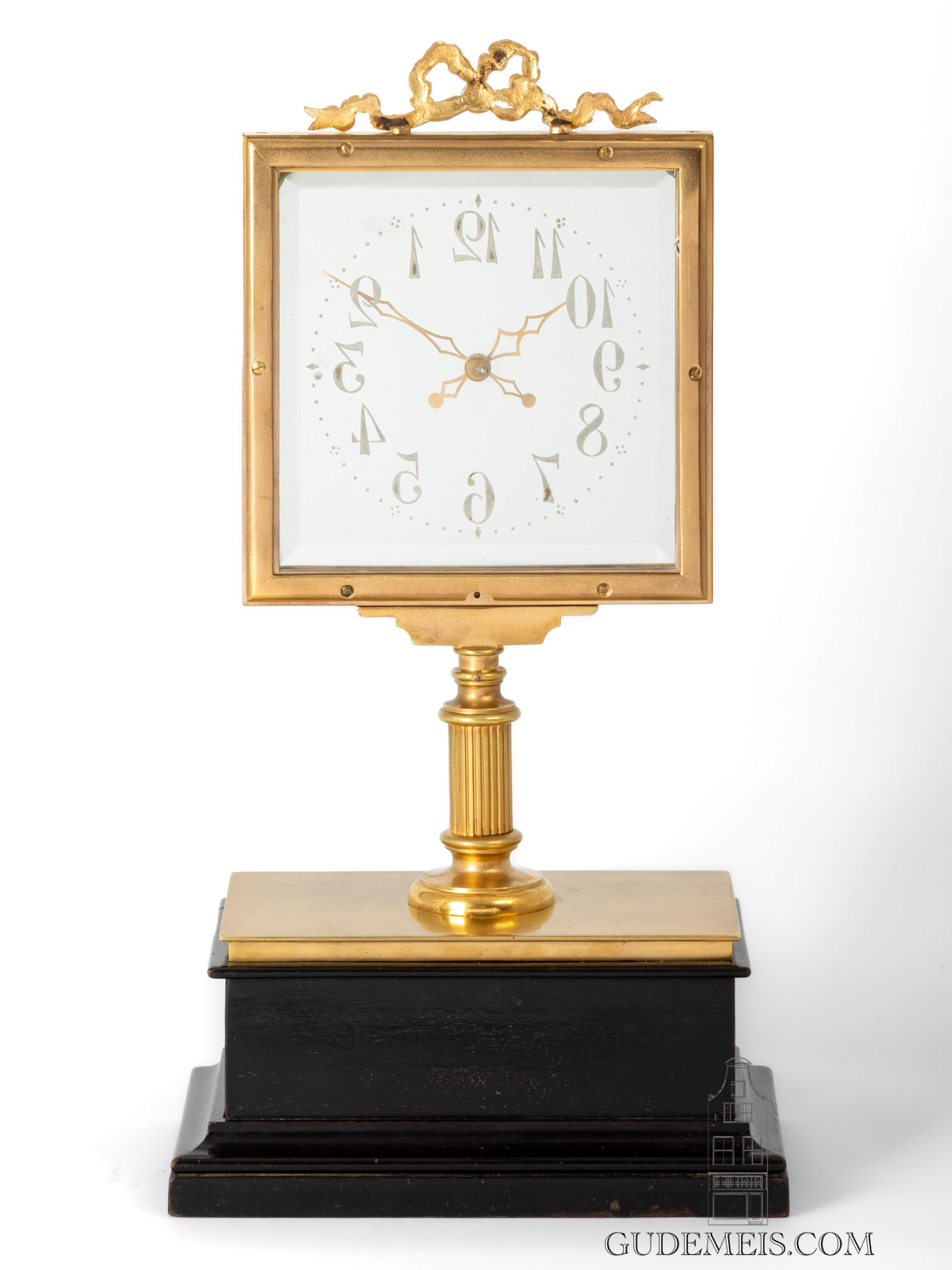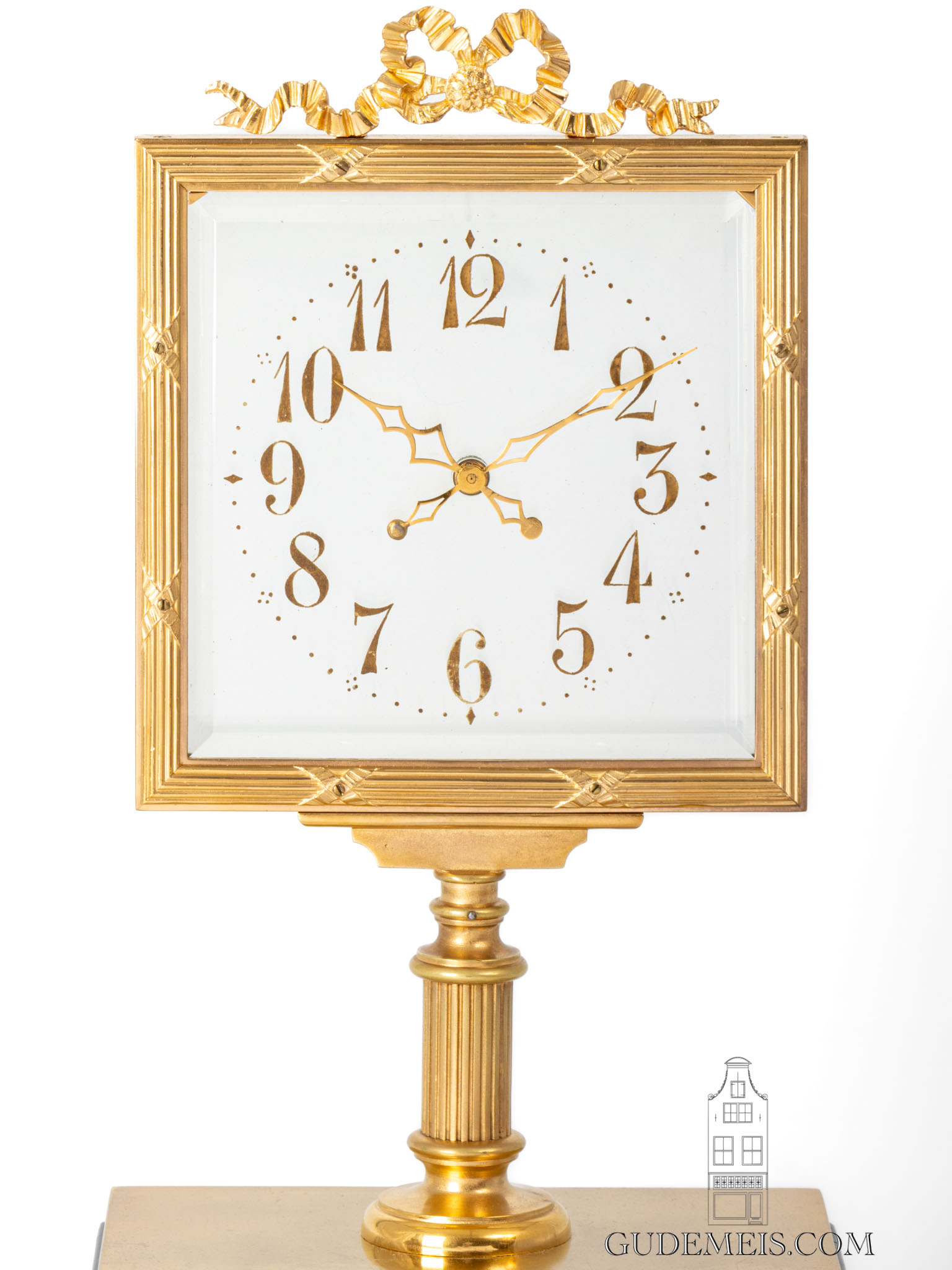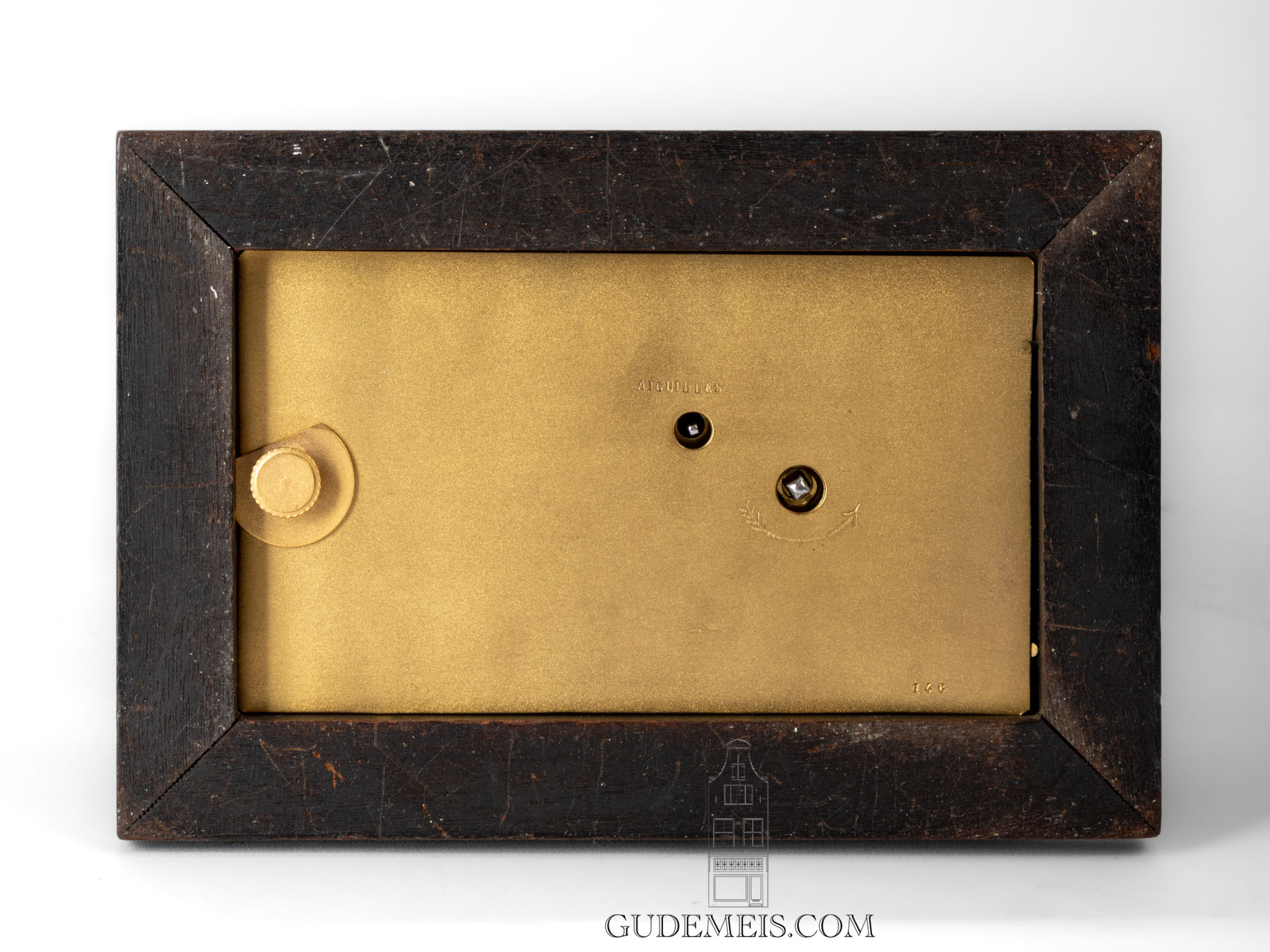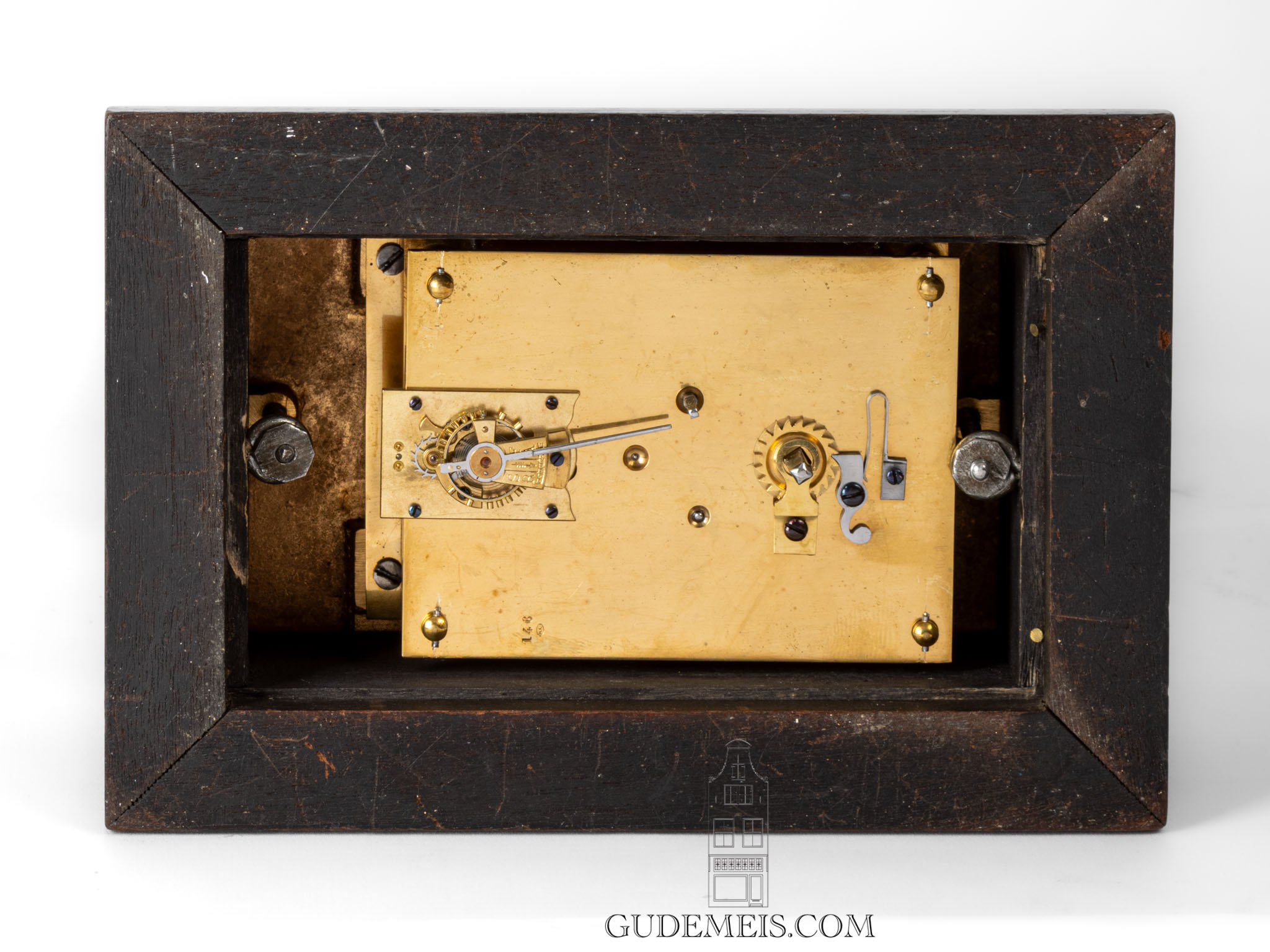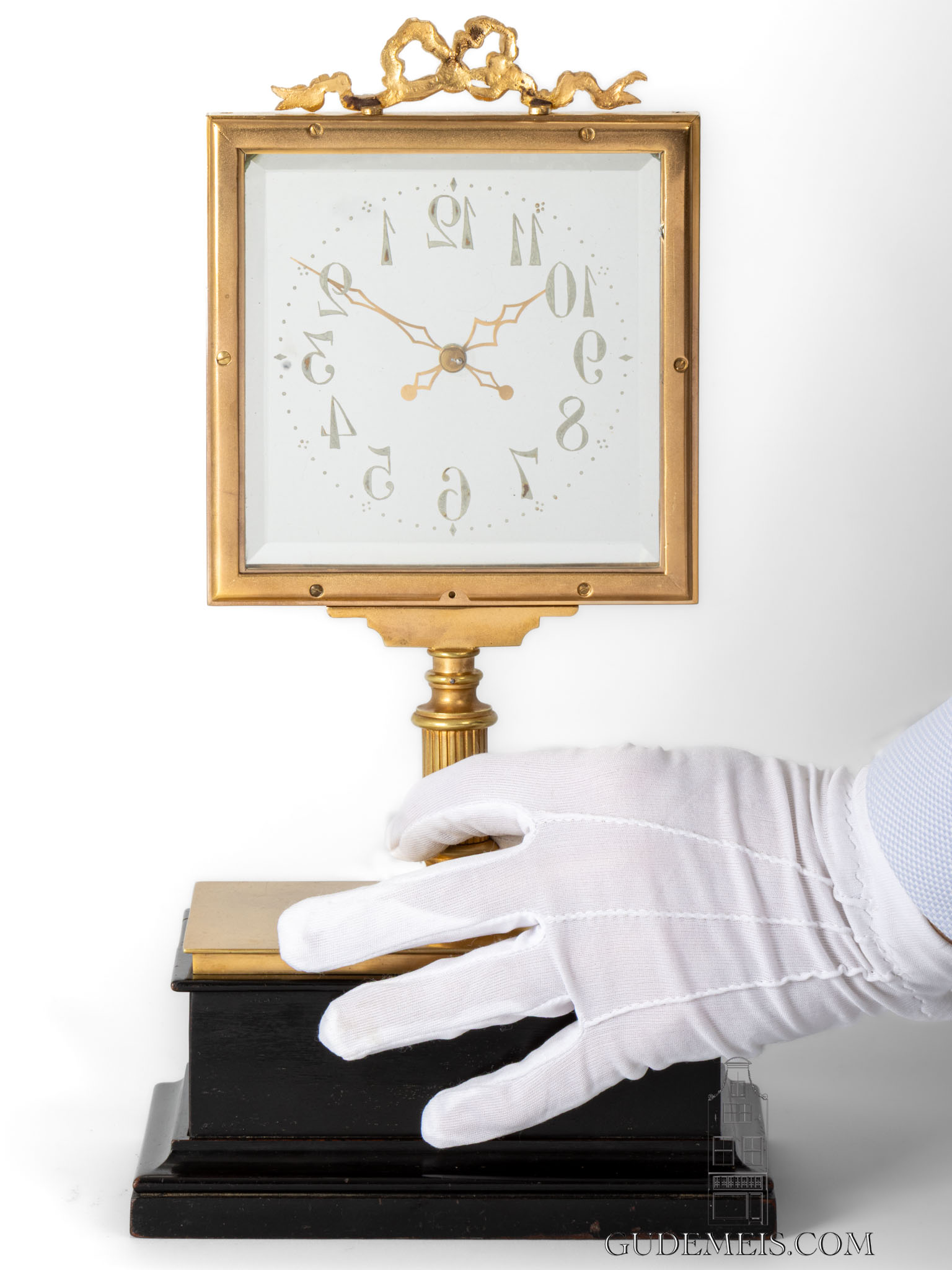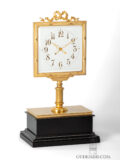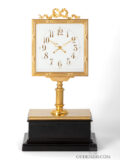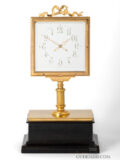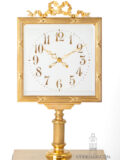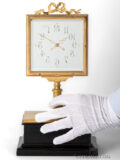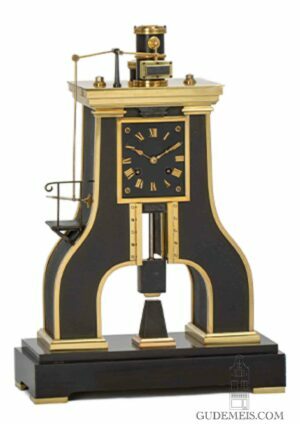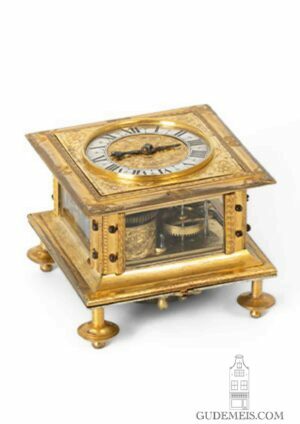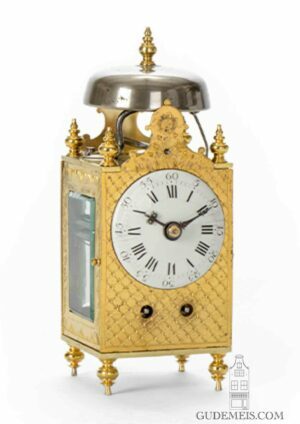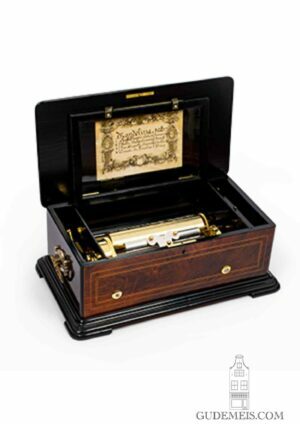A fine French Napoleon III mystery clock by Jean-Eugène Robert-Houdin, circa 1870.
Description
J.E. Robert-Houdin, a forgotten genius
The name Jean-Eugène Robert Houdin (1805-1871) is nowadays only known by some clock enthusiasts and illusionists. But it was a household name in the 19th Century throughout Europe. He was a famous illusionist who performed for Queen Victoria and King Louis Philippe. He even had his own theater and made frequent use of automatons of his own design and construction. He was one of the first to use electricity, then not known by many, in his shows to ‘move’ things on their own but also in clock making. Being the son of a clockmaker, he had already at a young age encountered movements and automatons like birdboxes and music boxes. His father had rather seen him becoming a lawyer but Jean-Eugène wasn’t to be denied and he finally was allowed to be a clockmaker. But he didn’t want to use his talent solely to make and repair clocks. He wanted to wonder and astonish people. Eventually this lead him to be an illusionist and maker of clocks and automatons. One of his creations was an alarm-lighter, a clock that lighted a candle when the alarm went off. Its patent and the great demand for this clock gave Robert Houdin the financial stability to pursue a career in both clock making and illusionism. He acquired great fame both in France and abroad. As was there a young American escapologist Ehrich Weiss who changed his name to Harry Houdini as a tribute to Robert Houdin.
The mystery clock
A mystery clock is a clock whose hands or pendulum is moved without any apparent connection to the movement. In case of this example the hands appear to turn without any drive across the square glass dial. This type of Houdin’s mystery clock is the fifth in a series of six types, this being the first with a square dial. With the earlier types it is easier to imagine that the glass dial can actually turn and in this way move the hands. It is remarkable that this clock even today arouses wonder and curiosity just as it did all those years ago. It is a testament of the genius of its maker Jean-Eugène Robert. (This clock and much information on the eventful life of Robert-Houdin is described in; Derek Roberts, Mystery, Novelty & Fantasy Clocks Chapter 19, pp. 218-232)
The square glass dial
The square glass dial has beveled sides and shows Arabic numerals. The diamond shaped hands are made of gilt brass.
Swiss lever escapement
The movement is driven by a spring barrel and has a duration of at least eight days. It is being regulated by a platform escapement with Swiss lever escapement in combination with a compensated balance. The clock doesn’t have striking. The backplate is marked AC and numbered 168.
Gilt brass
The movement is fitted in a rectangular moulded ebonized wooden base. On the gilt brass top there is a short fluted column supporting the ornate brass frame holding the dial and being topped by a ornamental bow.
